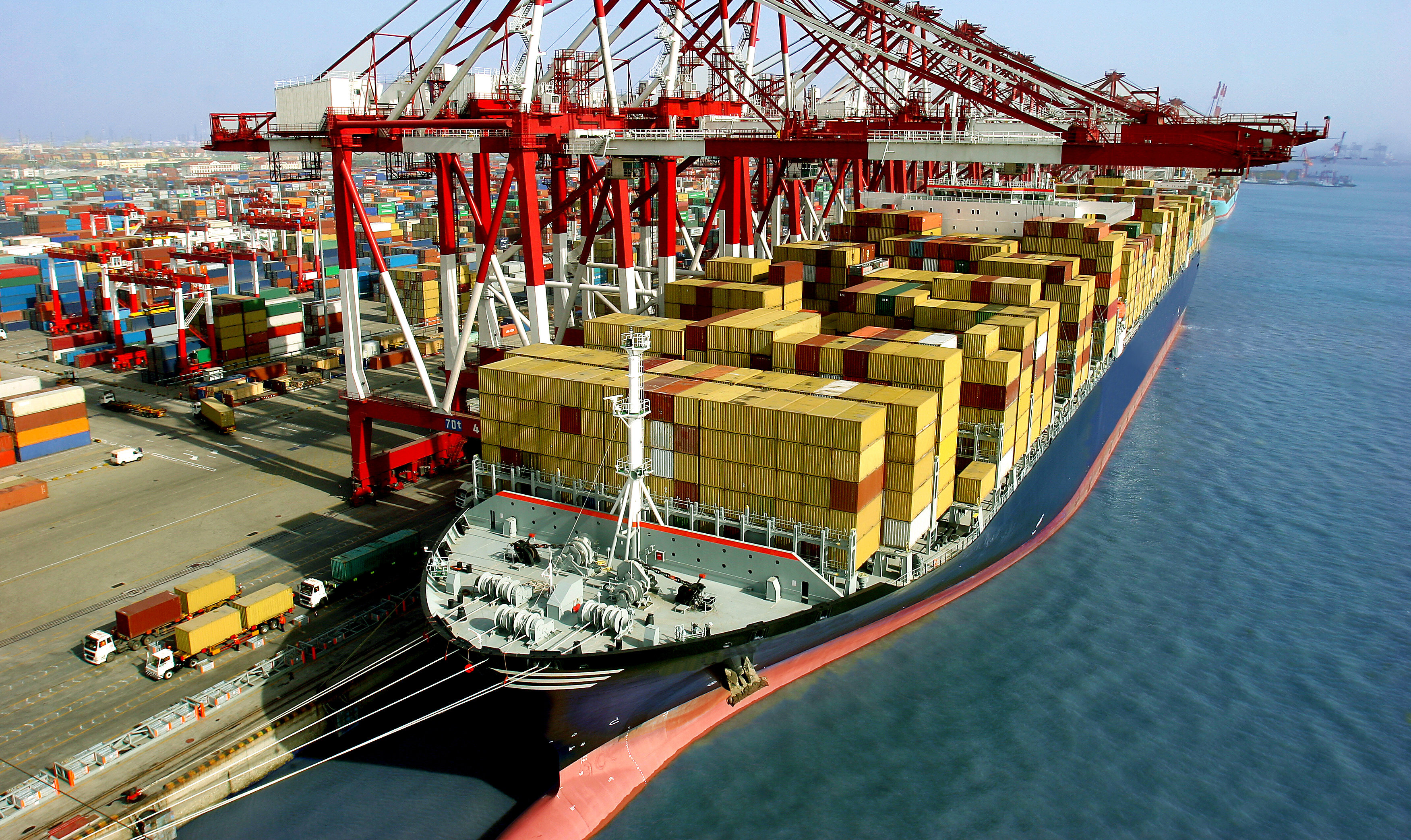This year, there are three major trade issues: progress in Sino-American trade negotiations, the outcome of the WTO dispute settlement between the EU and the US as well as potential changes in WTO rules – for instance, expanding a ban on market-distorting subsidies under WTO rules.
What’s more, the US and the UK are eager to strike a bilateral free trade agreement after Brexit takes place, and despite the afore-mentioned WTO dispute between the EU and the US, both blocs are hoping to ease tensions through meetings between US Trade Representative Robert Lighthizer and EU Trade Commissioner Phil Hogan.
UNITED STATES – CHINA
- Trump signed a phase-one trade deal with China on January 15, setting the stage for Beijing to buy an additional $200 billion worth of US farm goods, manufactured products, energy and services by 2022; a public version of the agreement has not yet been released. China will also take on obligations to open its financial services markets, stop some forced technology transfers, better protect US intellectual property and refrain from manipulating its currency for an unfair trade advantage as part of the deal.
- More stringent intellectual property protections and difficult structural issues like China’s massive government subsidies and other favors it showers on its state-owned enterprises are being saved for a phase-two negotiation, and possibly even a phase-three deal further in the future. President Trump is planning to travel to Beijing this year to begin those negotiations. But China is unlikely to make major new commitments until it sees whether Trump is elected to a second term in November.
- On January 14, US Trade Representative Robert Lighthizer, EU Trade Commissioner Phil Hogan and Japanese trade minister Hiroshi Kajiyama proposed expanding a ban on market-distorting subsidies under WTO rules, a measure apparently targeted at China. The three economies hope to win support for the proposal from a wide range of WTO members toward a ministerial meeting of the global trade governing body in June, officials said.
UNITED STATES – EUROPEAN UNION
- Two ongoing disputes might lead to more tariffs early in 2020. One involves the long-running WTO fight over European government support for Airbus and the EU’s counter complaint against US support for Boeing. However, the amount of the damages has not yet been determined by the WTO and is expected in June 2020.
- The US complaint is running ahead of the EU’s, and Washington won the right in the fall to impose 100-percent duties on $7.5 billion worth of European goods. USTR only exercised some of that right by imposing a 10 percent duty on European aircraft and a 25 percent duty on a long list of cheeses, wines and other products.
- USTR was seeking comments by 13 January on a proposal to hike those duties to 100 percent to increase pressure on Europe to drop its subsidies or reach a negotiated settlement. Duty increases could come shortly after the comment period ends. Read more here: https://bit.ly/3a7gH5Z
- Against that fraught background, Phil Hogan hopes to persuade Robert Lighthizer at their meeting on 16 January to delay any new action that would further disrupt the US-EU relationship.
- In a separate action, USTR is threatening to impose unilateral duties on $2.4 billion of French sparkling wine, cheeses and other goods in retaliation for France’s new digital services tax. The US believes that tax unfairly targets US internet giants, but rather than litigate the matter at the WTO, it has decided the issue itself.
- Duties could come quickly after the public comment period ended on 14 January. But they would likely be met with trade retaliation by the EU, further roiling trade relations and potentially complicating efforts within the Organization for Economic Cooperation and Development to reach a negotiated settlement on the digital services tax issue.
- A bigger question is whether talks on resolving the two disputes could morph into a full-fledged negotiation on a bilateral trade agreement. That seems unlikely unless the EU drops its resistance to including agriculture in the talks, while Trump remains fixated on auto imports that make up a large share of the US trade deficit with the EU. EU Trade Commissioner Phil Hogan will meet with Lighthizer in mid-January. He will be seeking a reset of the EU/ US trade relationship
- According to recently released US Customs and Border Protection data, the agency has assessed, as a result of tariffs implemented through US government actions under Section 232 of the Trade Expansion Act of 1962 and Sections 201 and 301 of the Trade Act of 1974, approximately $52.9 billion in import duties as of 8 January, 2020. Read more here: https://bit.ly/2uGlYRA
UNITED STATES – UNITED KINGDOM
- The countries are eager to strike a bilateral free trade agreement after Britain leaves the EU on 31 January. The two sides could make progress this year toward completing a deal, but it will be hard to finish the negotiation until London decides whether it wants to align itself more closely with US or EU regulatory standards in areas ranging from agriculture to the environment. The UK will be making those decisions in real time, since it will be negotiating its future trade relationship with the EU at the same time it is talking with the US.
UNITED STATES – WORLD TRADE ORGANIZATION
- Lower-level dispute settlement panels could decide shortly before the November election whether President Trump violated WTO rules by imposing duties on steel and aluminum imports in the name of national security. They also could rule on whether trading partners such as China and the EU acted improperly when they unilaterally retaliated against US exports.
- Congress also has a right to vote every five years on whether to withdraw from the WTO. Lawmakers haven’t exercised that option since 2005, but a high-profile push by Trump could motivate action this year or at least test the limits of how far Congress is willing to follow his trade-disruptive instincts.
USMCA
- On 7 January 2020, the Senate Finance Committee approved the USMCA by a 25-3 vote. At least five Senate committees will vote on the agreement this week. Usually only the Finance Committee votes on agreements. But the Senate parliamentarian, citing the 1974 trade act, determined late last week that six other panels also had to weigh in.
- The full Senate will not vote until the chamber votes on impeachment. However, Senator Grassley has stated that there would be no problem when it comes to getting USMCA approved in the Senate before the clock runs out under Trade Promotion Authority.
OVERVIEW OF EUROPEAN FTA AND OTHER TRADE NEGOTIATIONS
- Investment facilitation: The Directives for the negotiation of Investment Facilitation multilateral framework were adopted by the Council on 7 October 2019. The objective is to increase worldwide investment flows and contribute to sustainable development by making investment conditions and opportunities more transparent and streamlining administrative procedures. An outcome on investment facilitation is expected at the next WTO ministerial conference in June 2020.
- Fisheries: Part of the Doha Development Agenda mandate in 2002; negotiations on fisheries subsidies re-started in the WTO at the end of 2016. They aim at eliminating subsidies to illegal, unreported and unregulated fishing and at prohibiting subsidies that contribute overcapacity and overfishing. A full-fledged outcome will probably only be achieved at the 12th Ministerial Conference in June 2020 in Nur-Sultan.
- In April 2019, the Council approved mandates for the Commission to open negotiations with the United States on two agreements: (1) a trade agreement limited to the elimination of tariffs for industrial goods only, excluding agricultural products; (2) an agreement on conformity assessment that would have as its objective the removal of non-tariff barriers, by making it easier for companies to prove their products meet technical requirements both in the EU and the US while maintaining a high level of protection in the EU.

